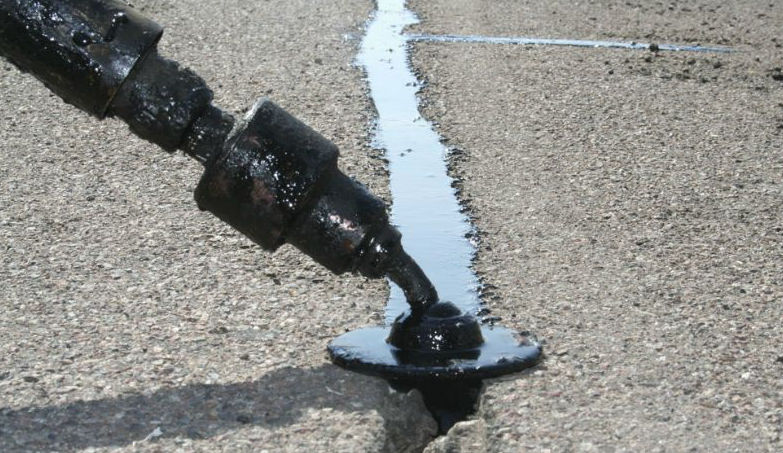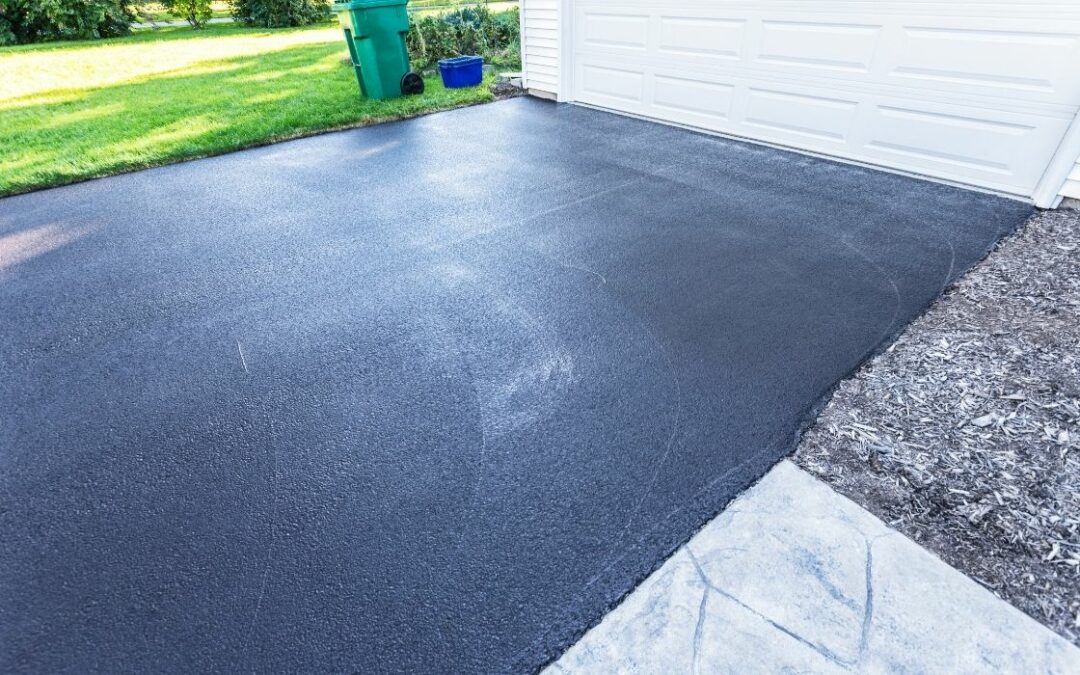Release the Possible: Regrading and Asphalt Sealing for Industrial Rooms
Wiki Article
Warm Mix Asphalt: A Lasting Remedy for Sidewalk
Hot Mix Asphalt (HMA) has arised as a leading lasting option for pavement options, using a myriad of environmental advantages and innovative modern technologies. As the demand for environmentally friendly building techniques grows, exploring the subtleties of HMA's sustainability can offer beneficial understandings into the future of sidewalk solutions.Ecological Advantages of Hot Mix Asphalt

Moreover, Warm Mix Asphalt assists to mitigate metropolitan warm island results. Its dark color soaks up sunshine, decreasing the quantity of warmth reflected back into the environment contrasted to lighter-colored sidewalks. This can lower ambient temperatures in metropolitan areas, reducing the need for a/c and ultimately decreasing power intake.
Additionally, Hot Mix Asphalt adds to enhanced stormwater administration. Its permeable nature enables water to penetrate the pavement and reenergize groundwater materials, minimizing drainage and the risk of flooding. These environmental advantages make Warm Mix Asphalt a lasting option for leading highways and roadways.
Power Performance in HMA Manufacturing
Is energy performance a vital aspect in the production of Warm Mix Asphalt (HMA)? Energy plays a significant role in the production of HMA, influencing both expense and environmental sustainability. One crucial element of energy efficiency in HMA manufacturing is the use of cozy mix asphalt (WMA) technologies.Furthermore, advancements in plant innovations have brought about more energy-efficient HMA manufacturing processes. Modern plants are made with functions like recycled asphalt pavement (RAP) processing abilities, efficient burner systems, and boosted insulation, all adding to power financial savings. By enhancing power use in HMA production, the market can decrease its carbon footprint while preserving premium sidewalk materials. Energy efficiency is, for that reason, a critical factor to consider in guaranteeing the sustainability of Warm Mix Asphalt manufacturing.
Recyclability of Warm Mix Asphalt
The recyclability of Hot Mix Asphalt (HMA) is a critical facet of its sustainability and long-lasting environmental effect. HMA is just one of one of the most recycled products in the USA, with over 100 million lots of recovered asphalt sidewalk (RAP) being reused yearly in new sidewalk building. Reusing HMA provides a number of ecological advantages, such as lowering the demand for virgin products, lowering energy usage throughout manufacturing, and reducing the quantity of waste sent out to garbage dumps.The procedure of recycling HMA involves crushing the existing pavement, squashing it into smaller sized items, and blending it with new accumulation and asphalt binder to create a recycled mix. On the whole, the recyclability of HMA plays a substantial role in promoting sustainable techniques within the pavement market.

Long-Term Performance of HMA
Asphalt pavements demonstrate sturdiness and durability over a prolonged period, reflecting the lasting efficiency of Hot Mix Asphalt (HMA) The longevity of HMA can be connected to its capacity to withstand rush hour lots, rough climate condition, and the impacts of aging. Studies have actually revealed that properly designed and appropriately built HMA pavements can last for 20 years or even more with normal maintenance. The key to taking full advantage of the long-lasting performance of HMA depends on using top notch materials, adhering to ideal methods in building, and carrying out efficient upkeep methods. Proper water drainage, regular assessments, and timely repairs are crucial for maintaining the structural honesty of HMA sidewalks over time. In addition, innovations in HMA modern technology, such as using polymer-modified binders and warm mix asphalt, have actually even more boosted the sturdiness and longevity of HMA sidewalks. By prioritizing high quality construction and upkeep practices, HMA proceeds to confirm itself as a sustainable and cost-efficient service for resilient pavement framework.
HMA: Resilience and Sustainability
Demonstrating both sturdiness and sustainability, Warm Mix Asphalt (HMA) has become a cornerstone in the building of long-lasting pavement frameworks - regrading. HMA's durability comes from its capacity to endure hefty loads, severe weather, and high web traffic quantities, making it a reputable selection for roadways, freeways, and airport paths. The composition of HMA, which usually consists of accumulations, binder, and filler, plays an essential function in boosting its longevity and resistance to tear and wear
Moreover, HMA's sustainability depends on its recyclability and energy-efficient manufacturing procedure. The capability to recycle redeemed asphalt pavement (RAP) in new HMA combinations reduces the demand for virgin materials and reduces the environmental influence of sidewalk building and construction and maintenance. Furthermore, the power efficiency of producing HMA hinges on its reduced blending temperature levels compared to various other sidewalk products, bring about reduced power usage and greenhouse gas discharges.
Verdict
To conclude, hot mix asphalt (HMA) uses a lasting remedy for pavement with its eco-friendly attributes. HMA's recyclability, energy effectiveness in production, and long-lasting sturdiness make it an environment-friendly selection for roadway building. By saving all-natural resources, lowering waste, and reducing greenhouse gas emissions, HMA plays hot mix asphalt an essential function in promoting sustainability in facilities growth. Its capability to alleviate metropolitan warm island impacts even more underscores its significance in developing durable and environmentally conscious sidewalk systems.
HMA is one of the most recycled materials in the United States, with over 100 million tons of redeemed asphalt sidewalk (RAP) being recycled every year in brand-new pavement building and construction.The process of reusing HMA includes milling the existing pavement, squashing it right into smaller sized pieces, and mixing it with new accumulation and asphalt binder to create a recycled mix.Asphalt pavements demonstrate resilience and strength over an extensive period, mirroring the long-lasting performance of Warm Mix Asphalt (HMA) In addition, improvements in HMA technology, such as the usage of polymer-modified binders and cozy mix asphalt, have additionally enhanced the longevity and longevity of HMA sidewalks. The ability to reuse recovered asphalt pavement (RAP) in brand-new HMA combinations decreases the need for virgin products and decreases the ecological effect of pavement building and upkeep.
Report this wiki page